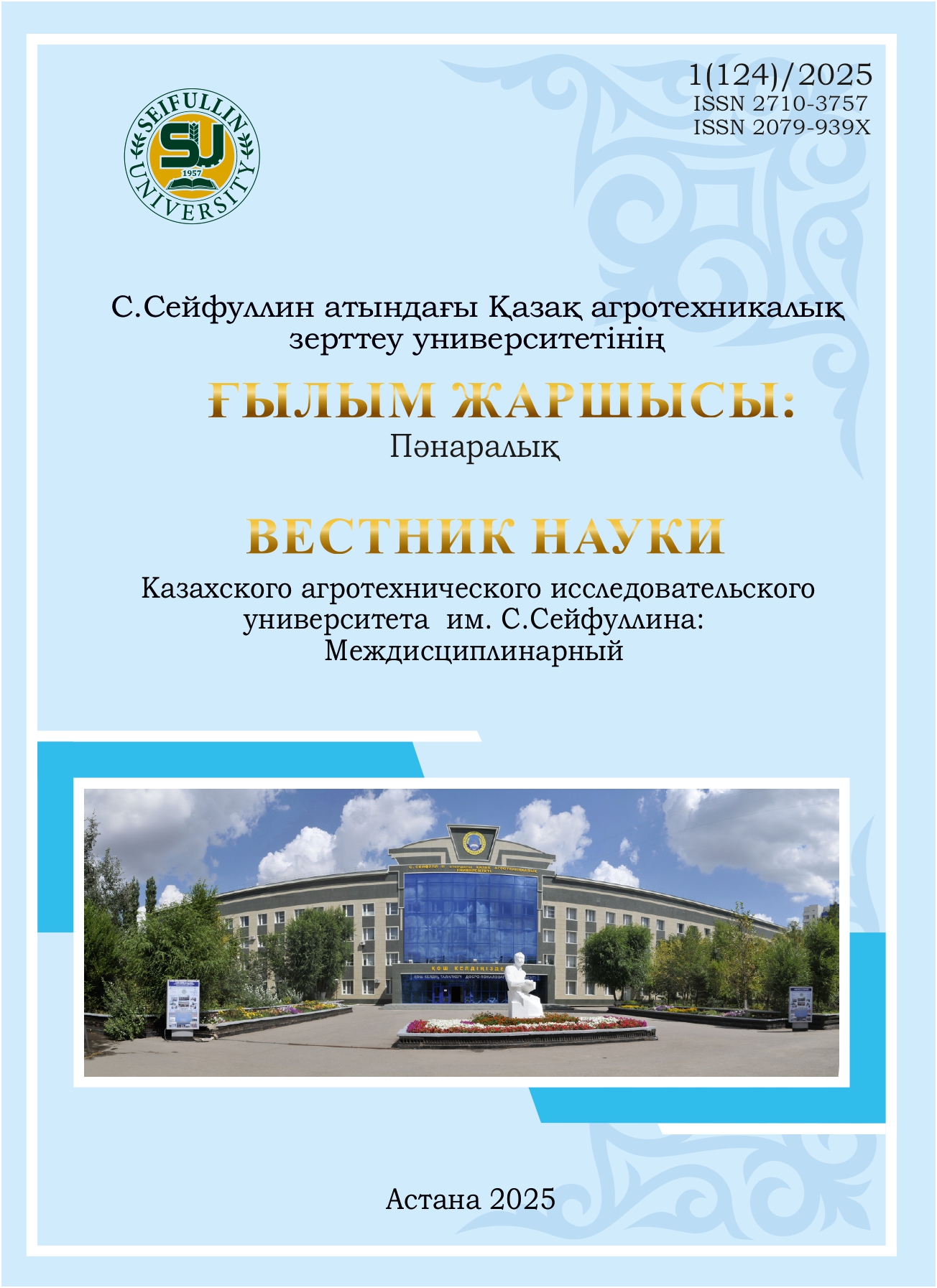The effect of growth stimulants on the organs of oilseed flax seedlings
DOI:
https://doi.org/10.51452/kazatu.2025.1(124).1820Keywords:
oilseed flax; growth stimulants; germination organs; pre-sowing seed treatment.Abstract
Background and Aim. The transition of seeds from dormancy to germination is determined by their metabolic state, where a stimulating factor can exert influence, and the seed can respond to it. The seed's response to exogenous factors is primarily reflected in the organs of the seedling. In the early stages of ontogenesis, analyzing seedling organs (their activity and growth potential) al-lows researchers to evaluate the effectiveness of growth promoting agents. Currently, limited re-search has been conducted on understanding the role of growth stimulants in regulating the growth and development of oil flax to more fully realize the genetic potential of the crop. Therefore, finding ways to influence plant organisms and selecting stimulants to enhance productivity is highly relevant.
Materials and Methods. The study was conducted on oil flax seeds (Linum usitatissimum L.) to examine the effects of growth stimulants on seedling organs. Seeds were placed on filter paper in Petri dishes and treated with various growth-promoting agents: Megamix Seeds (2 L/t), Ecobiosphere (0.75 L/t), Mycorrhiza (7.5 g/t), Albit (60 ml/t), and Lignohumate (100 g/t). Control seeds were treated with distilled water.
Results. An improvement in the quality characteristics of oil flax seeds was observed across all treated groups compared to the control. Treatment with Ecobiosphere and Megamix Seeds en-hanced seed germination synchronization, achieving 14.2 and 12.3 seeds per day, respectively, sur-passing the control by 3.9-2.3 seeds per day. Germination energy in the control group was 6–7% lower than in the samples treated with growth stimulants, while laboratory germination was 5-6% higher in the treated groups. Comparative assessment of the average lengths of seedlings and roots showed that treatment with Megamix Seeds and Ecobiosphere resulted in the maximum seedling and root lengths, measuring 6.5-7.2 cm (1.2-1.9 cm longer than the control) for seedlings and 7.0-8.0 cm (0.9 1.9 cm longer than the control) for roots, respectively. Treatment with growth-promoting agents activated metabolic processes in germinating seeds, leading to a reduction in the duration of key germination stages.
Conclusion. Based on these results, it can be concluded that the use of growth-promoting agents significantly improved seed swelling, germination rate, root system length, and seedling length. Their application not only accelerates germination but also effectively enhances the quality characteristics of oil flax and increases its yield potential.

